Lejian Ren
OneRec-V2 Technical Report
Aug 28, 2025Abstract:Recent breakthroughs in generative AI have transformed recommender systems through end-to-end generation. OneRec reformulates recommendation as an autoregressive generation task, achieving high Model FLOPs Utilization. While OneRec-V1 has shown significant empirical success in real-world deployment, two critical challenges hinder its scalability and performance: (1) inefficient computational allocation where 97.66% of resources are consumed by sequence encoding rather than generation, and (2) limitations in reinforcement learning relying solely on reward models. To address these challenges, we propose OneRec-V2, featuring: (1) Lazy Decoder-Only Architecture: Eliminates encoder bottlenecks, reducing total computation by 94% and training resources by 90%, enabling successful scaling to 8B parameters. (2) Preference Alignment with Real-World User Interactions: Incorporates Duration-Aware Reward Shaping and Adaptive Ratio Clipping to better align with user preferences using real-world feedback. Extensive A/B tests on Kuaishou demonstrate OneRec-V2's effectiveness, improving App Stay Time by 0.467%/0.741% while balancing multi-objective recommendations. This work advances generative recommendation scalability and alignment with real-world feedback, representing a step forward in the development of end-to-end recommender systems.
Kwai Keye-VL Technical Report
Jul 02, 2025Abstract:While Multimodal Large Language Models (MLLMs) demonstrate remarkable capabilities on static images, they often fall short in comprehending dynamic, information-dense short-form videos, a dominant medium in today's digital landscape. To bridge this gap, we introduce \textbf{Kwai Keye-VL}, an 8-billion-parameter multimodal foundation model engineered for leading-edge performance in short-video understanding while maintaining robust general-purpose vision-language abilities. The development of Keye-VL rests on two core pillars: a massive, high-quality dataset exceeding 600 billion tokens with a strong emphasis on video, and an innovative training recipe. This recipe features a four-stage pre-training process for solid vision-language alignment, followed by a meticulous two-phase post-training process. The first post-training stage enhances foundational capabilities like instruction following, while the second phase focuses on stimulating advanced reasoning. In this second phase, a key innovation is our five-mode ``cold-start'' data mixture, which includes ``thinking'', ``non-thinking'', ``auto-think'', ``think with image'', and high-quality video data. This mixture teaches the model to decide when and how to reason. Subsequent reinforcement learning (RL) and alignment steps further enhance these reasoning capabilities and correct abnormal model behaviors, such as repetitive outputs. To validate our approach, we conduct extensive evaluations, showing that Keye-VL achieves state-of-the-art results on public video benchmarks and remains highly competitive on general image-based tasks (Figure 1). Furthermore, we develop and release the \textbf{KC-MMBench}, a new benchmark tailored for real-world short-video scenarios, where Keye-VL shows a significant advantage.
OneRec Technical Report
Jun 16, 2025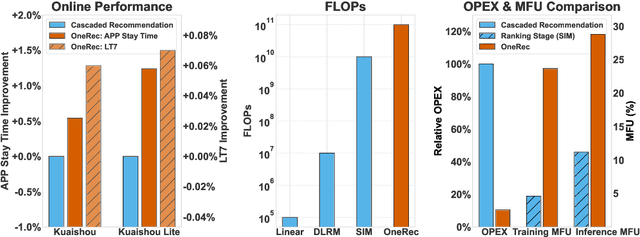

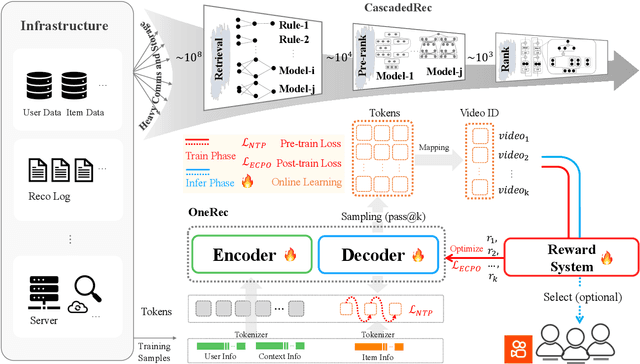

Abstract:Recommender systems have been widely used in various large-scale user-oriented platforms for many years. However, compared to the rapid developments in the AI community, recommendation systems have not achieved a breakthrough in recent years. For instance, they still rely on a multi-stage cascaded architecture rather than an end-to-end approach, leading to computational fragmentation and optimization inconsistencies, and hindering the effective application of key breakthrough technologies from the AI community in recommendation scenarios. To address these issues, we propose OneRec, which reshapes the recommendation system through an end-to-end generative approach and achieves promising results. Firstly, we have enhanced the computational FLOPs of the current recommendation model by 10 $\times$ and have identified the scaling laws for recommendations within certain boundaries. Secondly, reinforcement learning techniques, previously difficult to apply for optimizing recommendations, show significant potential in this framework. Lastly, through infrastructure optimizations, we have achieved 23.7% and 28.8% Model FLOPs Utilization (MFU) on flagship GPUs during training and inference, respectively, aligning closely with the LLM community. This architecture significantly reduces communication and storage overhead, resulting in operating expense that is only 10.6% of traditional recommendation pipelines. Deployed in Kuaishou/Kuaishou Lite APP, it handles 25% of total queries per second, enhancing overall App Stay Time by 0.54% and 1.24%, respectively. Additionally, we have observed significant increases in metrics such as 7-day Lifetime, which is a crucial indicator of recommendation experience. We also provide practical lessons and insights derived from developing, optimizing, and maintaining a production-scale recommendation system with significant real-world impact.
OneRec: Unifying Retrieve and Rank with Generative Recommender and Iterative Preference Alignment
Feb 26, 2025



Abstract:Recently, generative retrieval-based recommendation systems have emerged as a promising paradigm. However, most modern recommender systems adopt a retrieve-and-rank strategy, where the generative model functions only as a selector during the retrieval stage. In this paper, we propose OneRec, which replaces the cascaded learning framework with a unified generative model. To the best of our knowledge, this is the first end-to-end generative model that significantly surpasses current complex and well-designed recommender systems in real-world scenarios. Specifically, OneRec includes: 1) an encoder-decoder structure, which encodes the user's historical behavior sequences and gradually decodes the videos that the user may be interested in. We adopt sparse Mixture-of-Experts (MoE) to scale model capacity without proportionally increasing computational FLOPs. 2) a session-wise generation approach. In contrast to traditional next-item prediction, we propose a session-wise generation, which is more elegant and contextually coherent than point-by-point generation that relies on hand-crafted rules to properly combine the generated results. 3) an Iterative Preference Alignment module combined with Direct Preference Optimization (DPO) to enhance the quality of the generated results. Unlike DPO in NLP, a recommendation system typically has only one opportunity to display results for each user's browsing request, making it impossible to obtain positive and negative samples simultaneously. To address this limitation, We design a reward model to simulate user generation and customize the sampling strategy. Extensive experiments have demonstrated that a limited number of DPO samples can align user interest preferences and significantly improve the quality of generated results. We deployed OneRec in the main scene of Kuaishou, achieving a 1.6\% increase in watch-time, which is a substantial improvement.
Adversarial Gradient Driven Exploration for Deep Click-Through Rate Prediction
Dec 21, 2021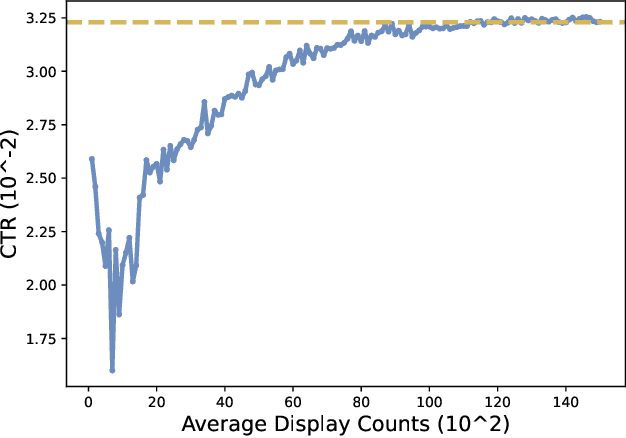
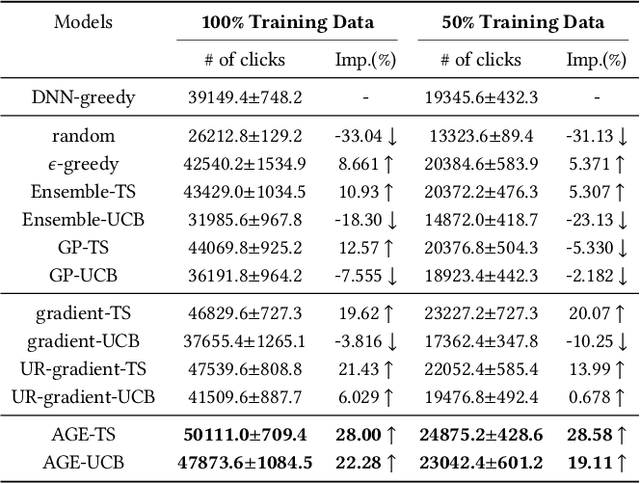
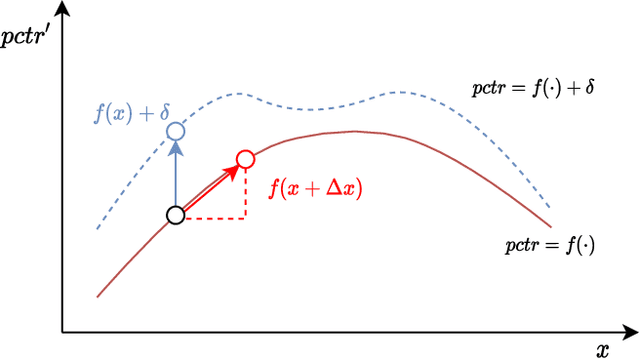
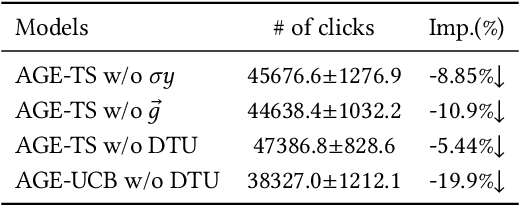
Abstract:Nowadays, data-driven deep neural models have already shown remarkable progress on Click-through Rate (CTR) prediction. Unfortunately, the effectiveness of such models may fail when there are insufficient data. To handle this issue, researchers often adopt exploration strategies to examine items based on the estimated reward, e.g., UCB or Thompson Sampling. In the context of Exploitation-and-Exploration for CTR prediction, recent studies have attempted to utilize the prediction uncertainty along with model prediction as the reward score. However, we argue that such an approach may make the final ranking score deviate from the original distribution, and thereby affect model performance in the online system. In this paper, we propose a novel exploration method called \textbf{A}dversarial \textbf{G}radient Driven \textbf{E}xploration (AGE). Specifically, we propose a Pseudo-Exploration Module to simulate the gradient updating process, which can approximate the influence of the samples of to-be-explored items for the model. In addition, for better exploration efficiency, we propose an Dynamic Threshold Unit to eliminate the effects of those samples with low potential CTR. The effectiveness of our approach was demonstrated on an open-access academic dataset. Meanwhile, AGE has also been deployed in a real-world display advertising platform and all online metrics have been significantly improved.
Human-centric Relation Segmentation: Dataset and Solution
May 25, 2021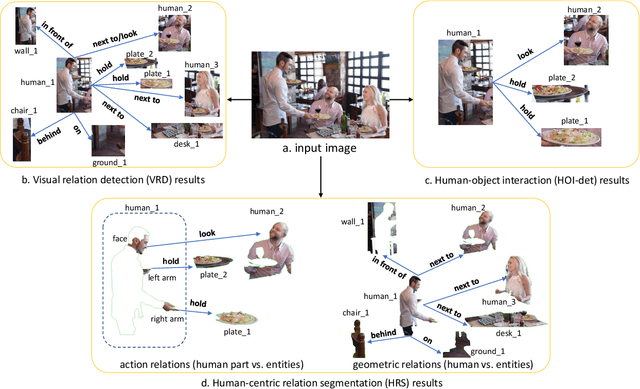

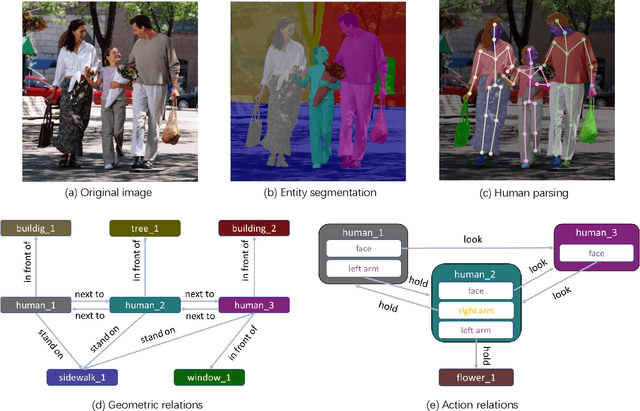
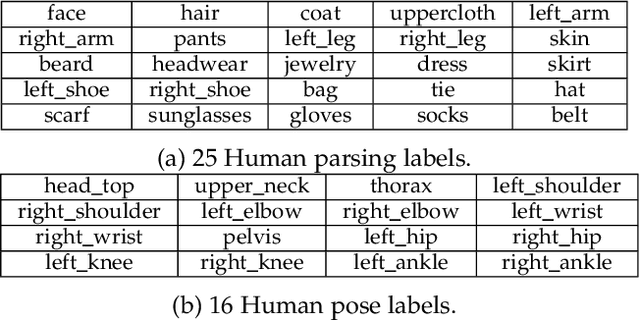
Abstract:Vision and language understanding techniques have achieved remarkable progress, but currently it is still difficult to well handle problems involving very fine-grained details. For example, when the robot is told to "bring me the book in the girl's left hand", most existing methods would fail if the girl holds one book respectively in her left and right hand. In this work, we introduce a new task named human-centric relation segmentation (HRS), as a fine-grained case of HOI-det. HRS aims to predict the relations between the human and surrounding entities and identify the relation-correlated human parts, which are represented as pixel-level masks. For the above exemplar case, our HRS task produces results in the form of relation triplets <girl [left hand], hold, book> and exacts segmentation masks of the book, with which the robot can easily accomplish the grabbing task. Correspondingly, we collect a new Person In Context (PIC) dataset for this new task, which contains 17,122 high-resolution images and densely annotated entity segmentation and relations, including 141 object categories, 23 relation categories and 25 semantic human parts. We also propose a Simultaneous Matching and Segmentation (SMS) framework as a solution to the HRS task. I Outputs of the three branches are fused to produce the final HRS results. Extensive experiments on PIC and V-COCO datasets show that the proposed SMS method outperforms baselines with the 36 FPS inference speed.
CAN: Revisiting Feature Co-Action for Click-Through Rate Prediction
Nov 11, 2020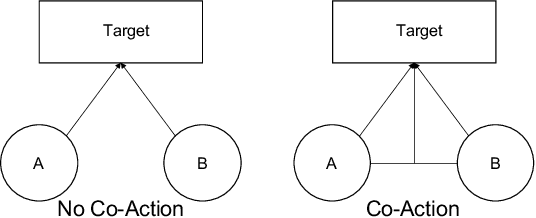

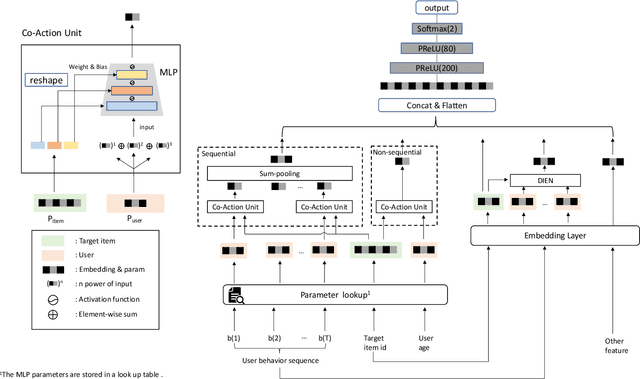
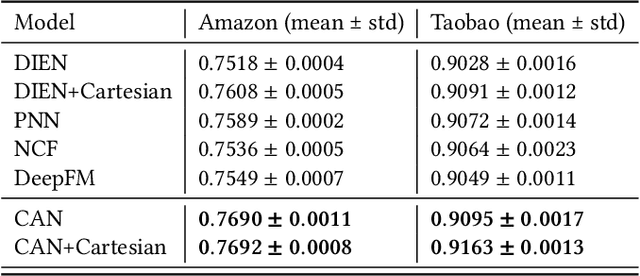
Abstract:Inspired by the success of deep learning, recent industrial Click-Through Rate (CTR) prediction models have made the transition from traditional shallow approaches to deep approaches. Deep Neural Networks (DNNs) are known for its ability to learn non-linear interactions from raw feature automatically, however, the non-linear feature interaction is learned in an implicit manner. The non-linear interaction may be hard to capture and explicitly model the \textit{co-action} of raw feature is beneficial for CTR prediction. \textit{Co-action} refers to the collective effects of features toward final prediction. In this paper, we argue that current CTR models do not fully explore the potential of feature co-action. We conduct experiments and show that the effect of feature co-action is underestimated seriously. Motivated by our observation, we propose feature Co-Action Network (CAN) to explore the potential of feature co-action. The proposed model can efficiently and effectively capture the feature co-action, which improves the model performance while reduce the storage and computation consumption. Experiment results on public and industrial datasets show that CAN outperforms state-of-the-art CTR models by a large margin. Up to now, CAN has been deployed in the Alibaba display advertisement system, obtaining averaging 12\% improvement on CTR and 8\% on RPM.
Search-based User Interest Modeling with Lifelong Sequential Behavior Data for Click-Through Rate Prediction
Jun 29, 2020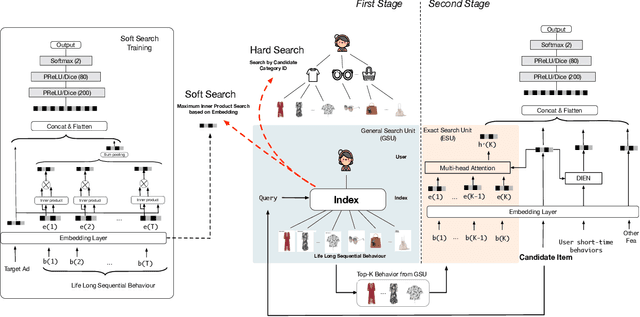

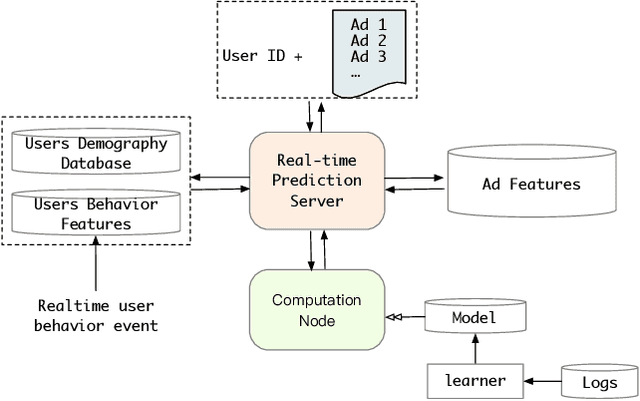
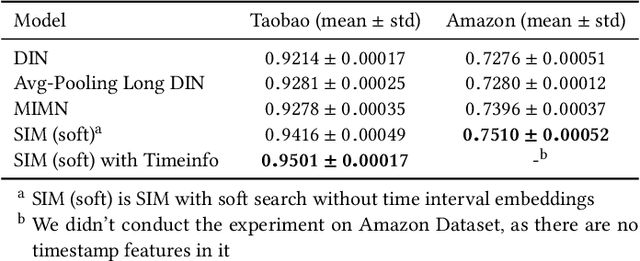
Abstract:Rich user behavior data has been proven to be of great value for click-through rate prediction tasks, especially in industrial applications such as recommender systems and online advertising. Both industry and academy have paid much attention to this topic and propose different approaches to modeling with long sequential user behavior data. Among them, memory network based model MIMN proposed by Alibaba, achieves SOTA with the co-design of both learning algorithm and serving system. MIMN is the first industrial solution that can model sequential user behavior data with length scaling up to 1000. However, MIMN fails to precisely capture user interests given a specific candidate item when the length of user behavior sequence increases further, say, by 10 times or more. This challenge exists widely in previously proposed approaches. In this paper, we tackle this problem by designing a new modeling paradigm, which we name as Search-based Interest Model (SIM). SIM extracts user interests with two cascaded search units: (i) General Search Unit acts as a general search from the raw and arbitrary long sequential behavior data, with query information from candidate item, and gets a Sub user Behavior Sequence which is relevant to candidate item; (ii) Exact Search Unit models the precise relationship between candidate item and SBS. This cascaded search paradigm enables SIM with a better ability to model lifelong sequential behavior data in both scalability and accuracy. Apart from the learning algorithm, we also introduce our hands-on experience on how to implement SIM in large scale industrial systems. Since 2019, SIM has been deployed in the display advertising system in Alibaba, bringing 7.1\% CTR and 4.4\% RPM lift, which is significant to the business. Serving the main traffic in our real system now, SIM models user behavior data with maximum length reaching up to 54000, pushing SOTA to 54x.
 Add to Chrome
Add to Chrome Add to Firefox
Add to Firefox Add to Edge
Add to Edge